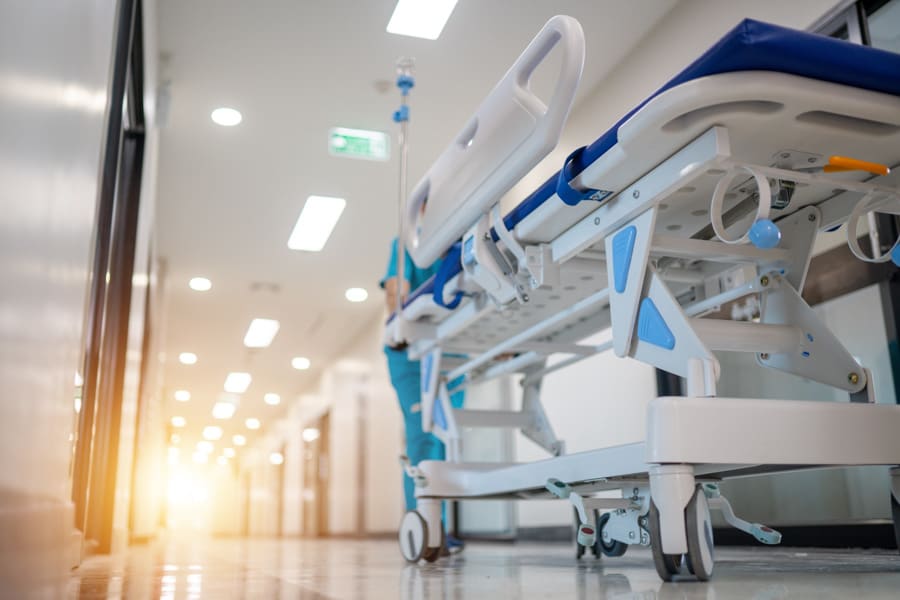This opinion column was written by Laura Farrelly, who recently retired from Niagara Health after leadership roles in the Emergency Department, Mental Health and Addictions and Women and Babies. It was published in the St. Catharines Standard, Welland Tribune and Niagara Falls Review.

As a nurse for over 35 years, including leadership roles in both the emergency department and mental health and addictions, I’ve seen the pressures that come with being on the front lines of healthcare.
Emergency departments (EDs) are where the cracks in our health and social systems become most visible, and the weight of that responsibility can be overwhelming. These challenges go beyond any single hospital system or department – they’re part of a much bigger puzzle.
Many people are understandably frustrated by long wait times in the ED. It’s frustrating for us, too. The truth is, the pressures hospitals face are bigger than what we can fix within our walls. We’re seeing more patients than ever who don’t have a family doctor or have become sicker after delays in care during the pandemic.
People sometimes suggest that what we need are more hospital beds, but I see it differently. What we need is an integrated system with more community and social supports.
For many, the ED feels like the only place to turn. And that’s the reality – when people can’t access the services they need in the community, they come to us. The ED becomes the safety net when other options feel out of reach.
We’re here to help in those moments of crisis, but we need better ways to help people move out of emergency care and into the right supports. That’s where the system faces its greatest challenge – finding sustainable solutions outside of hospital walls.
One of the most pressing issues is the growing number of patients who end up in the hospital when they do not need to be there. In some cases, these are patients who are brought to the hospital by loved ones who can no longer cope with caregiving responsibilities. And other times, these are individuals who are medically stable and no longer require hospital care but aren’t well enough to return home without support. With limited respite, home and community care options, these patients end up in hospital beds, which are urgently needed for acute care. This isn’t a problem any hospital can solve alone. It takes a coordinated effort across the entire region – social services, home and community care providers, long-term care facilities and all levels of government must work together to ensure that patients are placed in the appropriate care setting so hospitals can focus on those who need immediate, life-saving care.
Another area where the strain is most evident is mental health and addictions. In recent years, we’ve seen a surge in both the volume and complexity of cases. More serious addiction cases, more toxic drugs, and an increasing number of patients in crisis. It’s not something that can be fixed overnight. Addressing this requires a system-wide approach, with a full scope of accessible mental health services, addiction recovery programs and supportive housing.
People sometimes suggest that what we need are more hospital beds, but I see it differently. What we need is an integrated system with more community and social supports. Outpatient care, family doctors, home and community care, mental health resources and social and housing options can help people access the appropriate services the truly need.
When I look at the emergency department, I see it as a reflection of the broader struggles in our society. It’s where the effects of gaps in care come to a head. Patients arrive at the hospital because they can’t get the care they need elsewhere, and this puts additional strain on our EDs. Our staff are experts in emergency medicine and acute care but do not have the specialized knowledge and expertise in treating social challenges such as homelessness, yet nonetheless they do the best they can to care for everyone who comes through the doors.
Over the past three plus decades, I have watched my colleagues rise to meet these challenges. The work they do is remarkable, and they do it with compassion despite the relentless pressure. The ED isn’t just dealing with medical emergencies anymore; it’s managing social emergencies as well. It’s a lot to carry, but the dedication of the staff is unwavering. They show up every day knowing they’ll face long hours and difficult cases, and they do their best to provide care in an environment that is anything but easy.
The frustration people feel is real, and I understand it. But it’s also important to approach the situation with patience and compassion. The system we work in is under immense pressure, and so are the people in it – both the staff providing care and the patients seeking it. We’re all navigating a system that’s struggling to meet increasing demands. If we can foster more understanding, we can create space for real change to happen.
Ultimately, hospitals are just one piece of the puzzle. We need stronger social and community health services, more home and long-term care and mental health supports and better access to primary care to reduce the burden on hospitals and improve the health of our communities.

